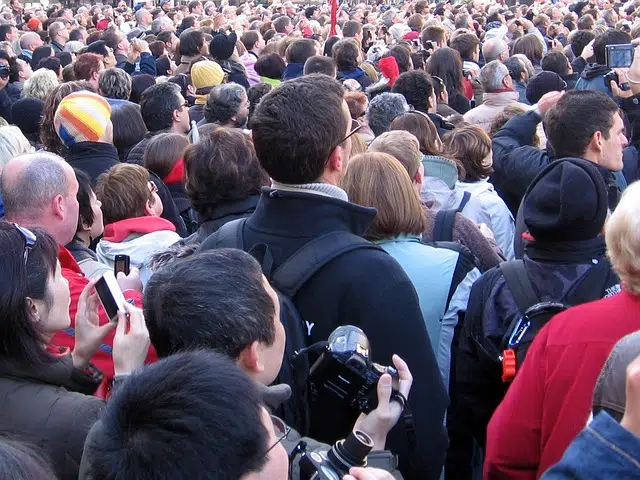
Density refers to the relationship between the mass of a body and its volume.
Density , from the Latin densĭtas , is the characteristic of dense . This adjective , in turn, refers to something that has a large amount of mass compared to its volume ; that is dense or solid; that has a significant level of content or is very deep in a reduced dimension; or that it is indefinite and unclear.
In the field of chemistry and physics , density is the magnitude that reflects the link that exists between the mass of a body and its volume. In the International System , the unit of density is the kilogram per cubic meter (known by the symbol kg/m3) .
A kilogram of bronze, for example, will take up much less space than a kilogram of feathers. This is explained by density: bronze is denser (it has more mass in less volume) than feathers. Density differences allow heavy but small objects and light but very large objects to exist.
Different types of density
Optical density , for its part, refers to the level of absorption of luminosity. In photography, the concept of density is linked to the darkening of an image depending on the amount of light to which it has been exposed.
In computing , density indicates the number of bytes that can be stored in a memory storage system.

Population density indicates how many people live in a certain territory.
The concept in demography
Just as the relationship between mass and volume of a body allows us to obtain the density of an object, demography appeals to a similar logic to talk about population density .
In this case, the magnitude is calculated from the number of inhabitants living in the same unit of area. If a city has 20,000 people spread over a territory of 2 square kilometers, its population density will be 10,000 inhabitants per km2.
Population density and environmental imbalances
Population density , therefore, refers to demographics , that is, to the number of individuals that live in a certain territory.
For any species, whether plant or animal, to be able to develop in a certain habitat in a manner that is advisable and equitable to the environment, it is necessary that there is an even relationship between resources present in the space and their use; If the number of individuals exceeds the amount of resources to be distributed among all, we speak of an environmental imbalance , where life in all its aspects is in danger.
When this anomaly occurs, it usually happens that a series of changes are naturally carried out in the populations to avoid the excessive increase of the community and ensure the survival of the species . Some of these transformations are:
* Slow development (as space and food are scarce, individuals begin to develop slowly and therefore, reproductive processes are delayed, bringing balance to the community);
* Low fertility (due to the weakening of the mothers, due to poor nutrition, the number of offspring decreases and they are more prone to mortality);
* Decrease in the size of individuals (scarcity in turn causes individuals to grow and weigh less);
* Emigration (if possible, part of the population moves to other regions in search of a better quality of life);
* Disappearance of the population (when the damage caused to the natural environment is excessive, the extinction of the species in said territory can occur. It can occur gradually or suddenly, as if it were an epidemic).
birth control
It is worth mentioning that in the case of human beings, because there are very few birth control measures that exist and, thanks to scientific advances, the mortality rate occurs at an older age, we have come to overpopulate the planet .
If exhaustive measures were not taken to equalize the distribution of resources and at the same time control the level of births, it would be impossible not only to end world hunger , but also to ensure a prosperous life for the species in any corner of the planet.
